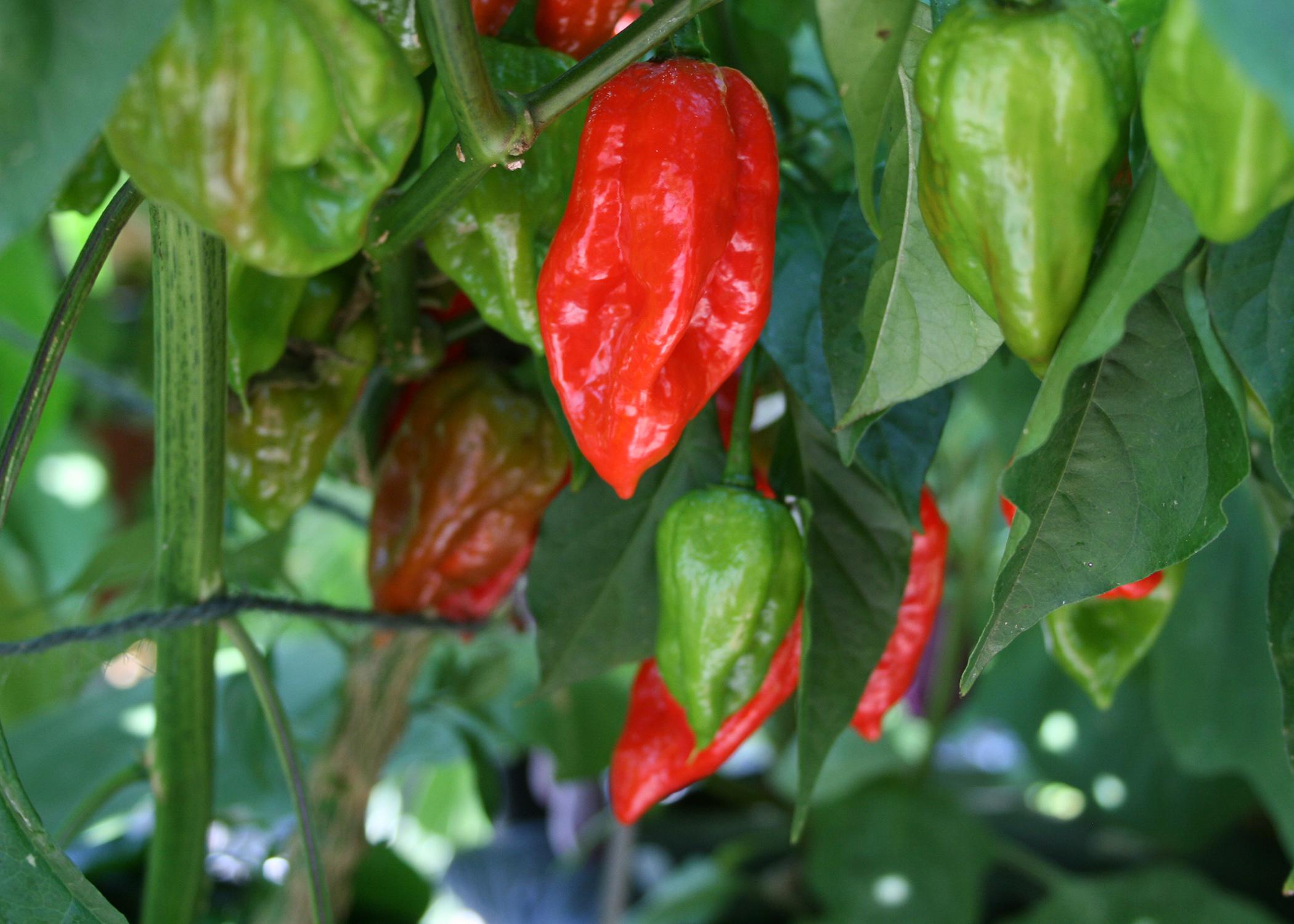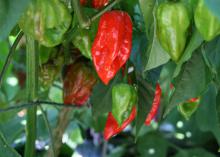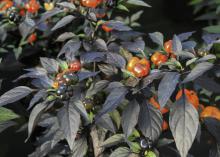Information Possibly Outdated
The information presented on this page was originally released on September 1, 2014. It may not be outdated, but please search our site for more current information. If you plan to quote or reference this information in a publication, please check with the Extension specialist or author before proceeding.
Get fired up about ornamental peppers
My taste buds love hot peppers, but the rest of me really likes the increased use of peppers as ornamentals.
Each year there are more ornamental peppers being introduced to the landscape market. Most ornamental peppers pack heat and are edible. Besides the culinary heat, many of these hot peppers are colorful and have great potential for use in the landscape.
There are many to choose from, including big and small plants, plants with green or purple foliage, and some plants with multicolored fruit. This variety can be unique way to add interest to your garden. One desirable trait of these ornamental peppers is that the delightfully colored fruit of the vast majority are held upright, above the foliage.
Purple Flash, which was chosen as a Mississippi Medallion winner for 2010, is an example of the versatility and value of ornamental peppers. With its purple and white variegated leaves, it is one of the showiest peppers available on the market. The fruit start as dark marbles and mature bright red. The foliage takes on a bluish tint when grown in the shade.
Some of the newest marketing has been to target specific holidays for sales of ornamental peppers, much the same way the poinsettia is marketed for Christmas. Several years ago, Lil’ Pumpkin and Pepper Jack were targeted at the Halloween season. Both have attractive dark foliage that adds summer interest. Pepper Jack has greenish-black foliage, and its fruit are shaped like small cones with a mixture of orange to black colors. Lil’ Pumpkin has really deep purple, almost black, foliage with bright-orange fruit shaped like little pumpkins that are perfect for the season’s festivities.
I mentioned earlier that I like to eat hot peppers, and I mean hot peppers. Each summer I grow the peppers called super hots, which include Ghost, Carolina Reaper, Trinidad Scorpion and Trinidad Moruga. To give you some perspective, the Ghost pepper is over 100 times hotter than a jalapeno, and the others are even hotter. I’m not advocating growing these in your landscape beds in the front yard, but rather in your vegetable garden. The fruit ripen to a bright red and are very pretty.
Most ornamental peppers will begin setting fruit as the temperatures begin to rise, so the best show is always saved for late summer and will keep producing through the fall season.
When the pepper plants are producing fruit, it is very common to have peppers in various stages of coloration. This is a fantastic feature and provides for a changing look in the landscape. Once fruit has set, it usually will maintain the beautiful colors and remain on the plant for a few months. Only when the fruit begin to dry will the color start to fade.
Ornamental peppers prefer to grow in consistently moist soil, but don’t be overly generous with the watering. Plants will not tolerate waterlogged soil. Fertilize with a good slow-release fertilizer early in the season, but once fruit start to set, there is no need to add additional nutrition.
Ornamental peppers also can make outstanding houseplants. They grow very well in a well-lit window. Since they will hold their fruit for extended periods, they can make good holiday plants. Most of these ornamental peppers are edible, but they are extremely hot, so be careful to keep curious youngsters from trying the brightly colored fruit.
Although it is too late for plantings this year, you may still be able to find containerized plants. If you are interested, the seeds are available at many of the online seed houses. The Chili Pepper Institute at New Mexico State University is actively breeding new and interesting ornamental peppers that are perfect for our Mississippi landscapes.









